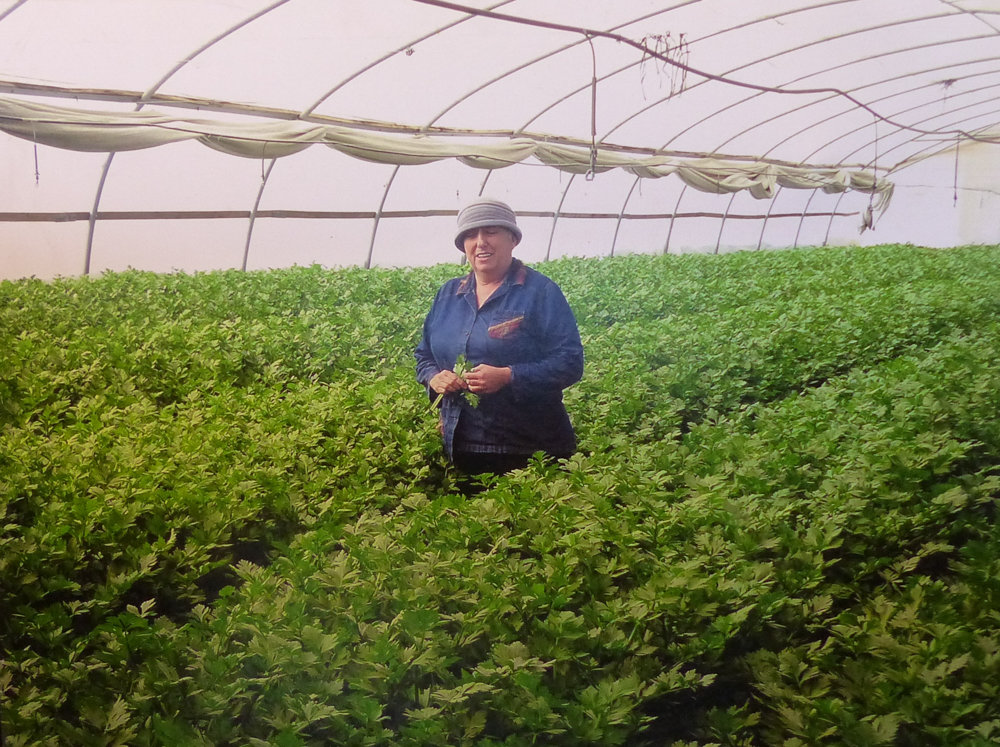And from the sands grow amazing — and kosher — veggies
Sometimes, what you expect is not what you get!
Visiting Israel several weeks ago, I had made arrangements to see how the residents of Netzer Hazani, a reconstituted community that had been expelled from Gush Katif, were creating a tourist destination built on its bird population. The community has a reservoir of grey water the size of a football field, and in all, 120 species of birds have been sighted over the years.
When we arrived for our tour, we were met by our guides, Stuart and Anita Tucker. Unfortunately, the reservoir was temporarily empty for repairs and enlargement. Fortunately, we met the Tuckers.
Stuart, a retired high school biology teacher. grew up in Cleveland. Anita, although born in London, grew up in Brooklyn. Together they made aliyah (Hebrew for “immigrating to Israel”) to Beersheva in 1969.
Looking for a new challenge, they moved in 1979 to the area now in Gaza, which became known as Gush Katif. The local Arabs from Khan Yunis who were to be their neighbors met them with the traditional greeting of bread and salt, but informed them the land they were settling was known locally as El Gerara, the Cursed Land. The reason for the name was that the soil was practically pure sand, with precious little fresh water, and it was impossible to grow anything on it.
Sand is not a simple medium, but trying to farm successfully would appear impossible. Soil is composed of three inorganic components — clay, silt and sand.
Clay particles (clay minerals) — which are the result of “chemical reactions between weathered minerals to form new mineral compounds” — are the tiniest soil component.
This material is sticky. It tends to hold water, drainage is slow, and the amount of air dissolved in the water and available to plant roots is low.
Silt is the medium-sized component created from mineral weathering (breakdown), primarily of quartz and feldspar.
These particles do not stick together. Silt has a medium capacity to hold water and air, and the drainage is slow to medium.
Sand has the largest grains and therefore, has good aeration due to large spaces created by the loose packing of rigid particles. That packing type means that the water-holding capacity is low and drainage is high.
The result is that neither water nor plant nutrients are held well in pure sand. However, the plus is that sand does not support much deleterious insect life.
Soils encountered in various outdoor environments are mixtures of these three components. Loam, which is considered the best agricultural growing medium, is composed of 40 percent sand, 40 percent silt and 20 percent clay. Mixtures representing other ratios have their own classifications, such as silt loam and sandy clay.
There are actually plants that prefer a soil with a high sand content. These include carrots (Daucus carota var. sativus), our common red radish (Raphanus sativus), and potatoes (Solanum tuberosum). Since these are tap-root vegetables, they grow better where the ground is soft and they can penetrate easily.
However, pure sand is a difficult problem.
That’s when I began to realize that this unassuming grandmother was a force to be reckoned with!
Anita, whose professional credentials included teaching in a seminary, was up to the challenge. Several technical innovations were used to creatively optimize agricultural possibilities. Greenhouses were erected. Drip irrigation hoses, developed in Israel in 1959 and now used worldwide, were maintained to keep roots properly hydrated. Additionally, sensors tracked the nutrient level necessary for proper plant growth.
Already in their first year, Anita was growing tomatoes for export on her original 1-acre plot, which grew over time to a full 5 acres.
Using these cultivation innovations, Anita increased her cultivated offerings to include cucumbers, cherry tomatoes and cantaloupes in addition to numerous flower varieties, such as wax flowers (Chamelaucium ciliatum) and baby’s breath (Gypsophila). All of these were grown for export to Europe.
The lack of insect contamination in sand led to another fascinating enterprise. Ordinarily, consumers need to check leafy produce for bugs. Kosher consumers have the additional necessity to do so for not only are insects unwelcome in the salad bowl, but they are forbidden by kosher food laws.
Realizing that the Gush Katif vegetables effectively eliminated this problem, the farmers developed an entire line of leafy vegetables such as lettuce, cabbage, bok choy, parsley and dill, which were welcomed with great joy by kosher cooks who would otherwise have to spend much time checking for bugs.
Anita was telling me that in years past, the Gush Katif farmers were busy packaging celery at this season for use as “karpas” during the Pesach (Passover) seder.
Using advanced methodology, apparently, we can truly see the desert bloom!
Have a thought or comment for Sura Jeselsohn? Email her at greenscenesura@gmail.com.






